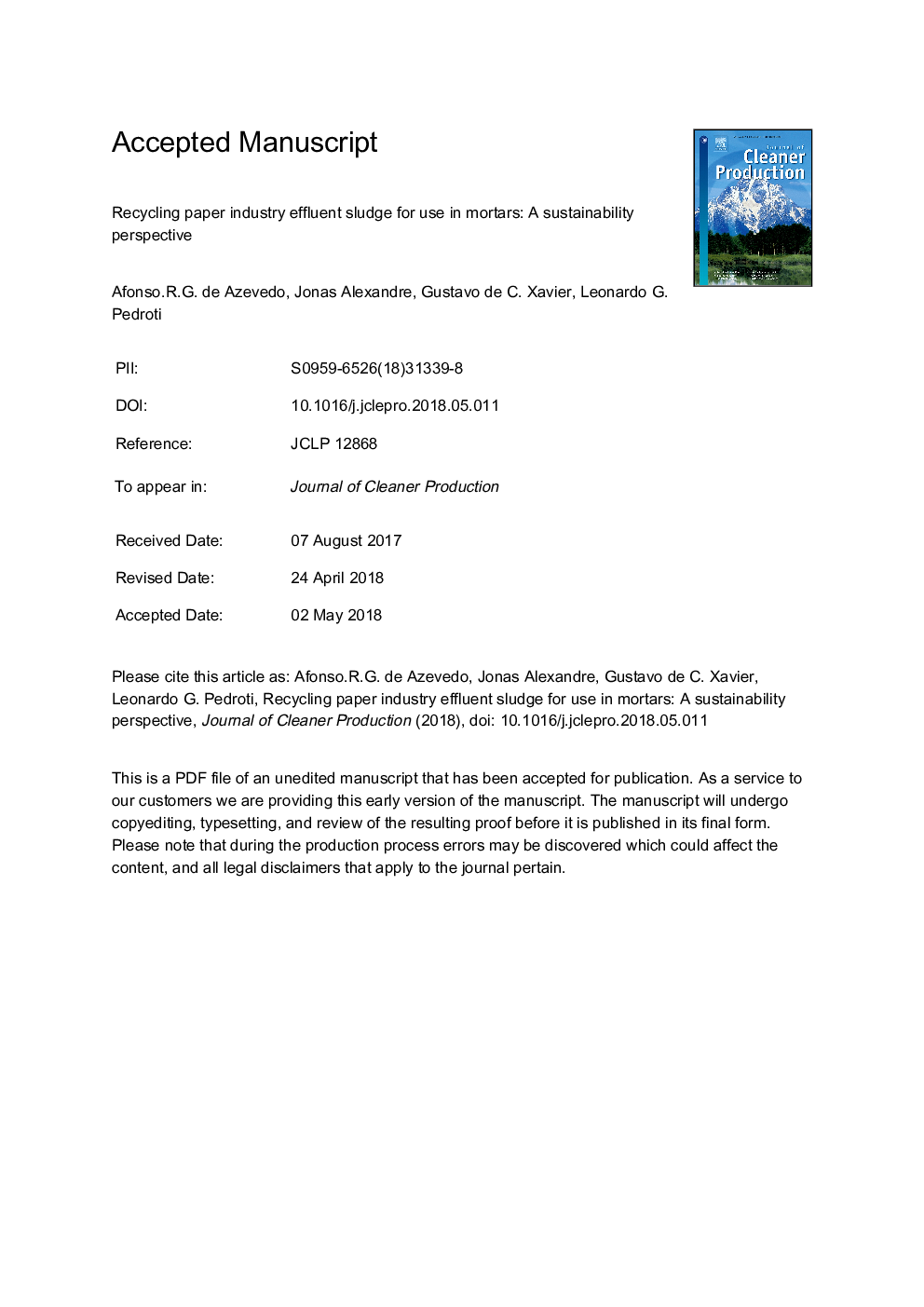| Article ID | Journal | Published Year | Pages | File Type |
|---|---|---|---|---|
| 8094553 | Journal of Cleaner Production | 2018 | 47 Pages |
Abstract
The paper and cellulose manufacturing industry generates significant quantities of waste, including an extremely humid sludge, which is considered to be an effluent with high environmental liability for the manufacturer. Studies have shown that this waste sludge may be utilized in construction material, such as mortar for fixing blocks, as well as for ceiling and wall coatings that use ceramic masonry as a sealant. The recycling of pulp and paper industry waste sludge has important environmental benefits, by preventing soil and water pollution caused by inadequate disposal and by reducing the depletion of natural resources, such as lime, used in cementitious materials. This study analyzed the sustainability of incorporating such waste into cement-based mortars. Tests were conducted replacing lime, one of the most expensive mortar components with high environmental impact, with waste sludge in contents of 5%, 10%, 15%, and 20%. Analysis was then performed on the samples to assess the primary technical characteristics of these incorporated mortars, such as the consistency index, heat of hydration, content of incorporated air, water retention, mechanical strength and the capillarity coefficient. The results were compared with the results of the characterization tests that were performed on the waste material. The results showed that for use in wall and ceiling mortar coatings, the level of incorporation should not exceed 10%, because higher levels yield lower values of mechanical strength resistance, incompatible with market requirements. This result is probably due to the low heat of hydration of the waste material which generates slower reactions. On the other hand, higher levels of waste material content, above 10%, are appropriate convenient for mortar used to fill small repairs in masonry that do not require control of properties.
Related Topics
Physical Sciences and Engineering
Energy
Renewable Energy, Sustainability and the Environment
Authors
Afonso R.G. de Azevedo, Jonas Alexandre, Gustavo de C. Xavier, Leonardo G. Pedroti,
